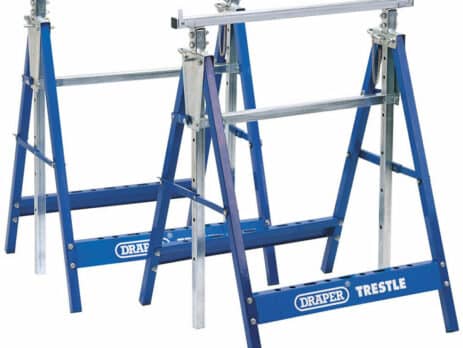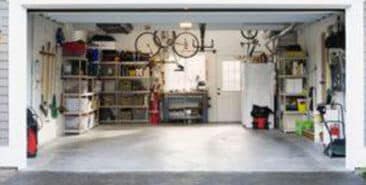About Trestles VAT
This is a durable and versatile mode of construction in 2021. It is used in bridges, roofs, and other large structures. The metal trestle is typically formed using a simple angle bracket arm that connects two flat plates.
The metal trestle is a unique steel trussing system that has proven reliable for centuries for heavy-duty applications such as bridges. Metal trussing systems are designed to supplement the traditional timber trusses that are often used in construction. Metal trestles can be constructed with welded angles, bolted angles, plate connections, or hollow metal tubes. Trestles are available in the following sizes No. 2 (SWL: 600kg, 1200kg over 2no) 1.5′ to 3′ 450 – 900mm No. 3 (SWL: 600kg, 1200kg over 2no) 3′ to 6′ 900 – 1800mm No. 4 (SWL: 600kg, 1200kg over 2no) 4′ to 7′ 1230 – 2100mm.
Metal trestles can be made of a variety of materials including steel (e.g., hot-rolled or cold-rolled), aluminium, copper, and wrought iron. Cold-formed metal trestles are typically fabricated from flat stock using a grinder to form the angles to connect the joints and plates of the truss. Alternatively, they may also be formed by utilizing angle-plate cutout techniques.
Heavy-duty metal trestles have been used for the construction of warehouses, elevators, office buildings, factories, and other large steel structures. The metal trestle is also known as a built-up beam because it is usually constructed using flat plates and angle brackets.
However, the metal trestle may be constructed from a single piece of rectangular tube with the bracket being extruded as part of the same forging. This technique is commonly used in the construction of large industrial roof structures in Ireland such as warehouse roofs and aircraft hangar roofs. The metal trestle is an ideal type of trussing for heavy-duty applications like warehouses, grain elevators, and industrial buildings.
The metal trestle is a simple construction that can be easily assembled in the field. These metal trusses can be installed prior to the concrete pouring process. Then, removed after the concrete has totally cured thus eliminating interruption to the overall construction.
The hollow metal tube approach offers economies of material and labour. The hollow-metal tube arch-truss requires much less material than other trusses due to its overall strength and rigidity. These metal trusses provide a low-cost alternative for the construction of large industrial buildings and high tensile strength in shape that is strong in both tension and compression. The design of the pipe arch provides superior strength for roofs, while still offering economy in materials. The pipe arch is also the most efficient of all types of arch trusses. The metal trestle’s suitability for commercial building applications makes it an ideal choice for industries such as packaging, warehouses, and manufacturing in Ireland.
A simple way to construct a metal trestle is to weld angle brackets together into one truss. When connecting two angle brackets, one should weld, or connect by rivets instead of welding. There are several advantages of welding over rivets. Welding is easier to do properly and it results in a more secure connection between the brackets. Welded connections eliminate the possibility of galvanic corrosion between the brackets that may occur with riveted connections.
The main disadvantage of welded connections to this type of truss is that they tend to be a bit more expensive than riveted connections. A completed metal trestle is constructed by inserting angle bracket arms through two plates at a 90-degree angle, forming an L-shape. Welding or riveting the connecting angle brackets can strengthen the metal truss.
Another way to construct a DIY metal trestle is to use welded braces in place of the angle brackets. The brace can be used as a means for attaching the top and bottom plates to one another. This type of metal truss is very strong and durable. The use of angle brackets may prove more economical than using braces. However, using both angles and braces is far stronger than using only one or the other.
The angle brackets are simply bolted to the plates at either the top or bottom plate depending on what is being used for the other connection. The angle brackets are attached using arc welded bracket arms by bolting them at a 90-degree angle to the plates.
A metal trestle can be constructed by inserting a brace into two of these L-shaped joints, forming an X-shape. The brace can then be bolted to the top and bottom plate in order to strengthen and secure it. This type of metal trestle is the most popular and the easiest to install in Ireland.
A metal trestle can be constructed by using a series of plates bolted together. A series of angle brackets are welded to each end or side plate, forming an L-shaped structure. The plates are then bolted together or riveted, depending on the desired strength and durability of the finished assembly. This type of construction is very strong and durable. One of the drawbacks to this method is welding can be difficult especially if the angle bracket is used for anything other than the connection between plates.
For a metal trestle to be supported entirely by metal brackets, it will have less weight than one which uses only bolts or welded connections. The advantage to using bolts together with an L-shaped bracket is it offers a means of connecting two structures together. If you’re looking for a high-quality and affordable metal trestle you’ll search and find the best metal trestle at a great price on-site. Our Trestles are ideal for Trade professionals and also DIY enthusiasts.




